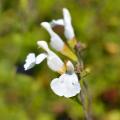Hardy bushy Sage
Would this plant suit my garden? Set up your Plantfit profile →
Available in 3 sizes
Available in 2 sizes
Available in 2 sizes
Available in 2 sizes
Available in 3 sizes
Available in 1 sizes
Available in 2 sizes
Available in 2 sizes
Available in 1 sizes
Available in 1 sizes
Available in 2 sizes
Available in 0 sizes
Available in 1 sizes
Available in 2 sizes
Available in 1 sizes
A selection of bushy Sauges, among the hardiest, adapted to regions that experience heavy winter frosts. The most cold-resistant is undoubtedly the officinal sage, Salvia officinalis, which comes in several differently colored varieties ('Berggarten', 'Purpurascens', 'Icterina'...). Some botanical species such as Salvia lavandulifolia, the lavender-leaved sage, or S. tomentosa from the Balkans are capable of withstanding -15 °C if the soil that welcomes them is perfectly drained. Among the bushy sauges native to the mountains of Mexico, the natural hybrid between Salvia greggii and S. microphylla named Salvia x jamensis is the hardiest: the plant can survive up to -17 °C in dry soil. It forms a beautiful bush 80 cm (32in) tall and produces a quantity of small velvety purple-red flowers in spring and late summer. The varieties derived from the species sauges grahamii, greggii and microphylla are innumerable and very popular for their long flowering period and varied colors, but their hardiness is generally slightly lower, with brief frosts around -12 °C.
As with many plants, the notion of hardiness depends a lot on the duration of the frost, exposure to wind and the nature of the soil. The bushy sages will be hardier if the frost is brief and they are planted in the sun, sheltered from dry and cold winds. A perfectly drained rockery, a raised bed enriched with gravel, or a slope that does not retain water will help them better withstand harsh winters.
Haven't found what you were looking for?
























































